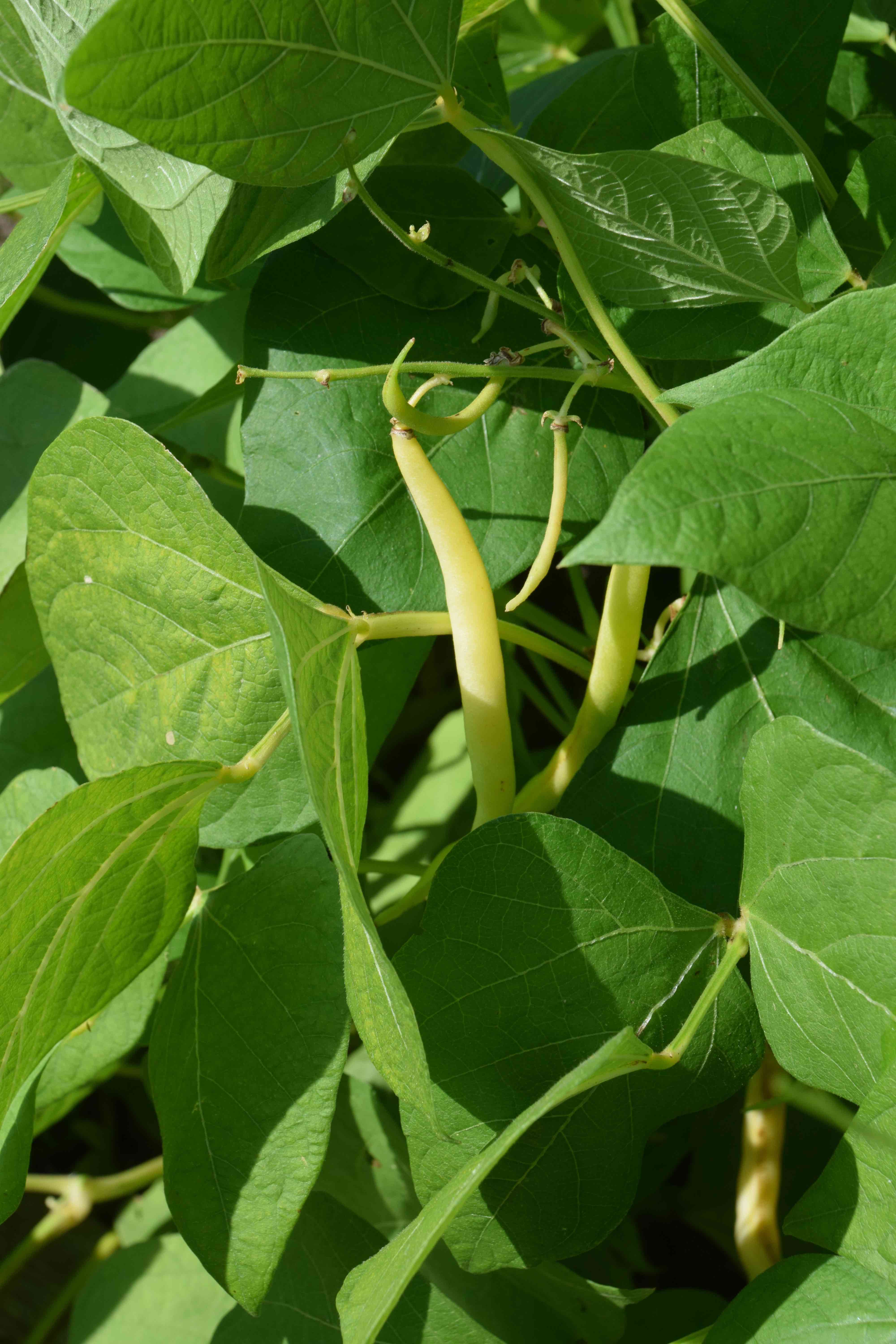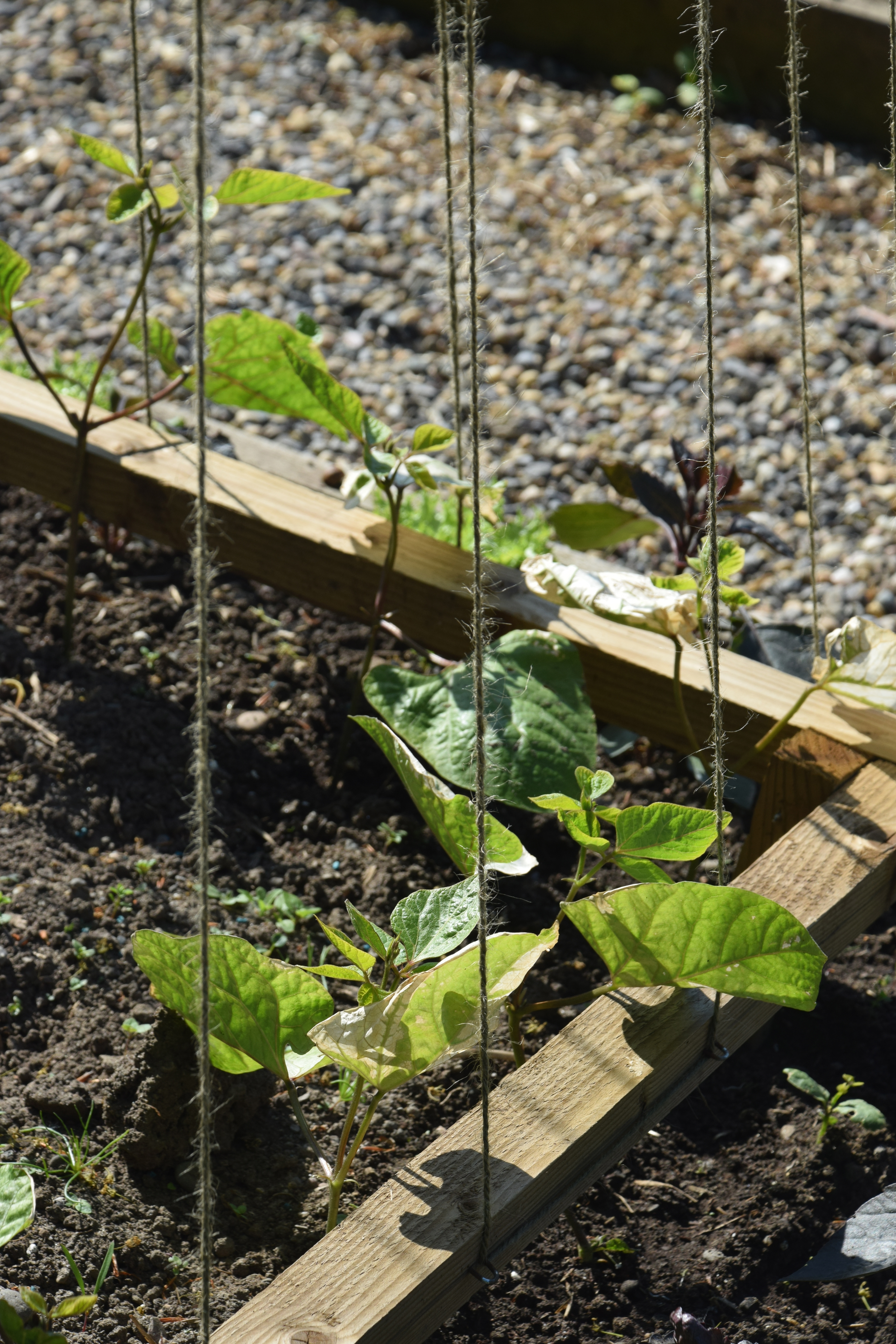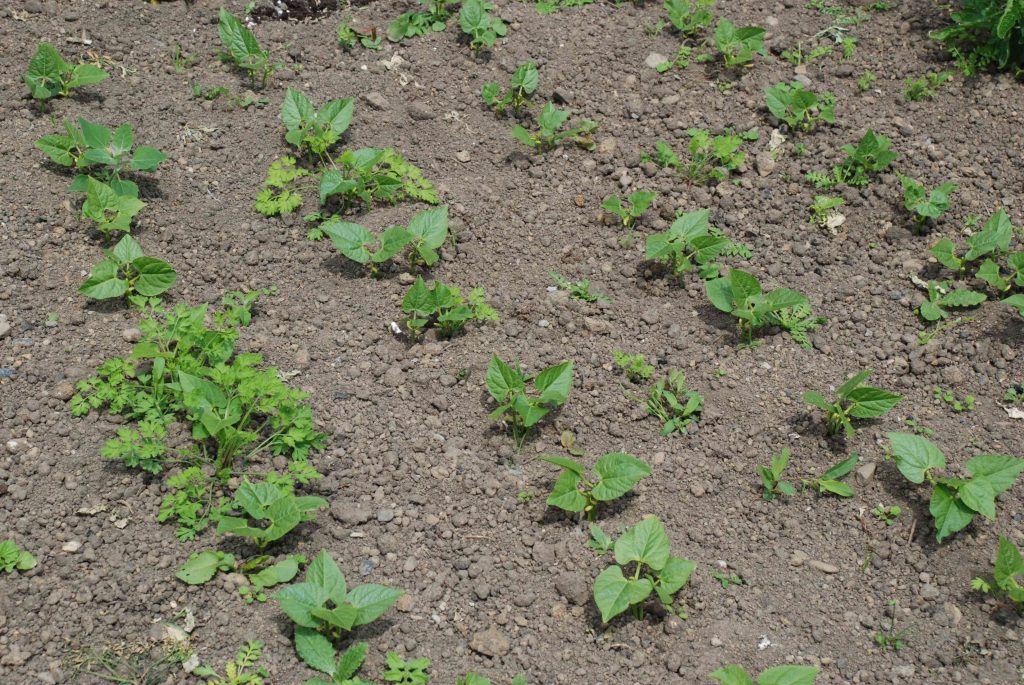
Beans are well worth growing and are generally quite easy. There are three main types of bean that we can grow at home: broad beans, runner beans and French beans. These are completely different species and need different treatment but all grow best in moist, rich soil, ideally that is slightly alkaline and not too acid. It is worth adding lime to the soil in autumn where runner beans are to grow. They all need a sunny, sheltered site. I will start with broad beans.
Broad beans are unlike the other two because we usually don’t eat the pods (though they can be eaten when small). Unlike the other two they are also hardy. They can be sown in autumn and the small plants will survive winter outside. The standard variety for autumn sowing is ‘Aquadulce Claudia’. Other kinds can be sown in spring, either where they are to mature or in pots and planted out. Broad beans are ‘cool season’ crops and if you want to grow them this year you need to sow immediately or it will be too late for this season. Unless you grow dwarf kinds they need support or they flop over. They do suffer from a few problems, including blackfly that infests the shoot tips and late sowings are more prone to these.
At this time of year it is better to start French beans or runner beans.

I grew up with runner beans and the British are unique in their love of runner beans. In Europe they are grown more for their flowers than their pods. Runner beans are my favourite veg of the year but they are not the easiest crop to grow.
They need support to twine up and need moist soil. They can be sown where they are to grow, in late May, or you can sow now in pots. Sow two seeds per small pot and plant out the pots of seedlings 30cm apart in early June. Unfortunately, runner bean flowers do not always ‘set’ pods well, especially if the weather is dry and warm, so the first flowers, in late July and August, do not always produce a crop. Later flowers will produce crops. The red flowers are also attractive to birds which will peck them off to get to the sweet nectar. New varieties with pink or white flowers are usually much more reliable and sparrows leave them alone.
French beans are self-fertile so every flower makes a pod. There are dwarf kinds, which crop more quickly but for a shorter period, and climbing kinds which take longer to crop but crop for many months. The seeds will rot rather than grow if the soil is wet and cold so I never sow outside till June. For an earlier crop I sow in cell trays in the greenhouse and plant out the seedlings in June. Now is an ideal time to sow. I have one batch of seedlings ready to plant out and will sow more when I do.
I have become a French bean convert because they are quick to prepare for the kitchen – just topping and tailing them. I also tend to grow yellow- or purple-podded kinds because it is easier to spot the beans on the plants. The purple pods turn green on cooking. If you do miss some pods the beans inside are edible and can be eaten shelled as flageolet or dried as haricot beans. You can buy special varieties for this purpose (shelling beans) but all are edible.
You can also grow French beans easily in a large pot of multipurpose compost on the patio and a pot of climbing beans can be attractive as well as productive. To ensure a long season of dwarf French beans sow some now and more in mid June. You can even sow some in late July in a poly tunnel for an autumn crop.
